NASA Sending “Message In A Bottle” To Speak With Extraterrestrials, Will Arrive In 2030
Seeking out life beyond Earth has long since been a mission of many astronomers, with NASA being one of the champions of the cause. While also wanting to learn more about the universe that surrounds us, they've also hoped that somewhere in that research, we'll find evidence of life on another celestial body.
A recent mission plan hopes to continue that research, sending a message to possible outside life while searching for water among Jupiter's many moons.
To get more content like this delivered directly to your inbox, check out the Higher Perspectives weekly newsletter!
Reaching Out
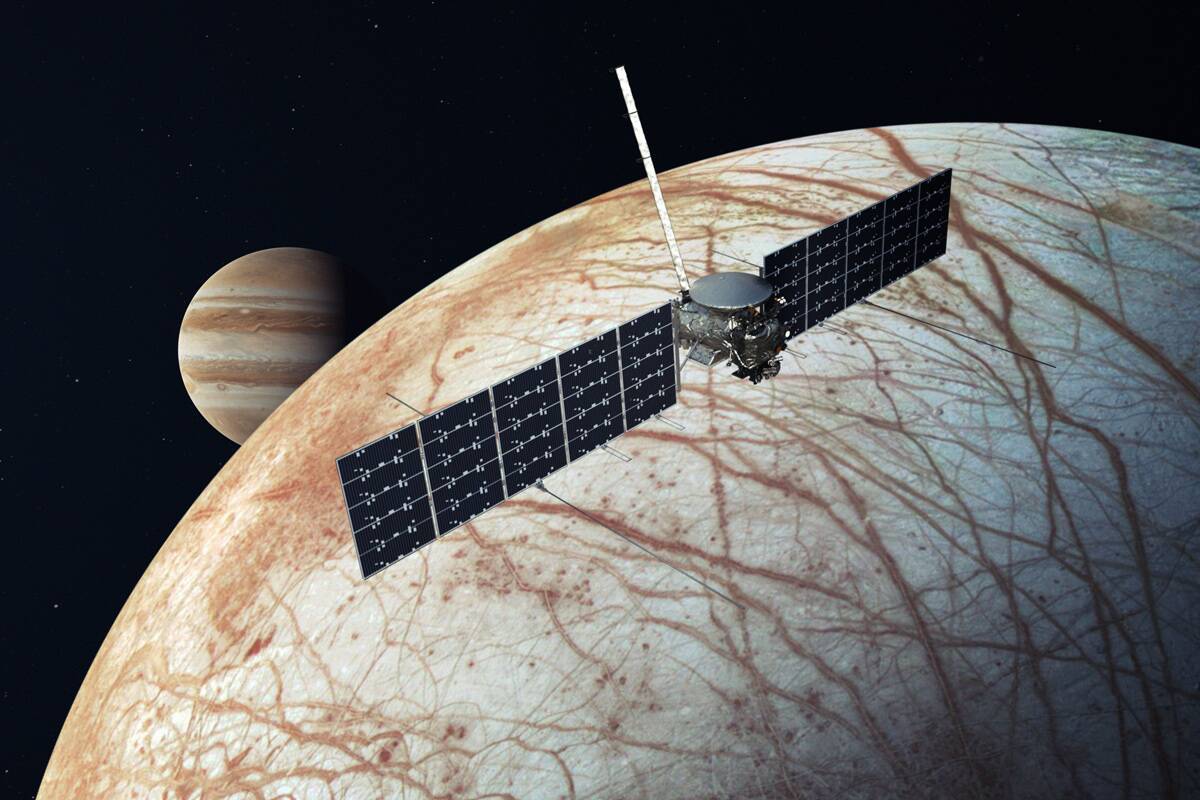
In the year 2030, the Jupiter system will see the arrival of a spacecraft carrying a very important message from Earth, an attempt to communicate with alien species. The spacecraft, NASA's Europa Clipper, will be launching in October of 2024, starting its six-year journey to Europa, one of Jupiter's moons.
This project is being called an attempt at a "message in a bottle" from NASA, a carefully curated metal plate with engravings on it expressing humanity's desire to make contact with other forms of life.
Conveying Our Message
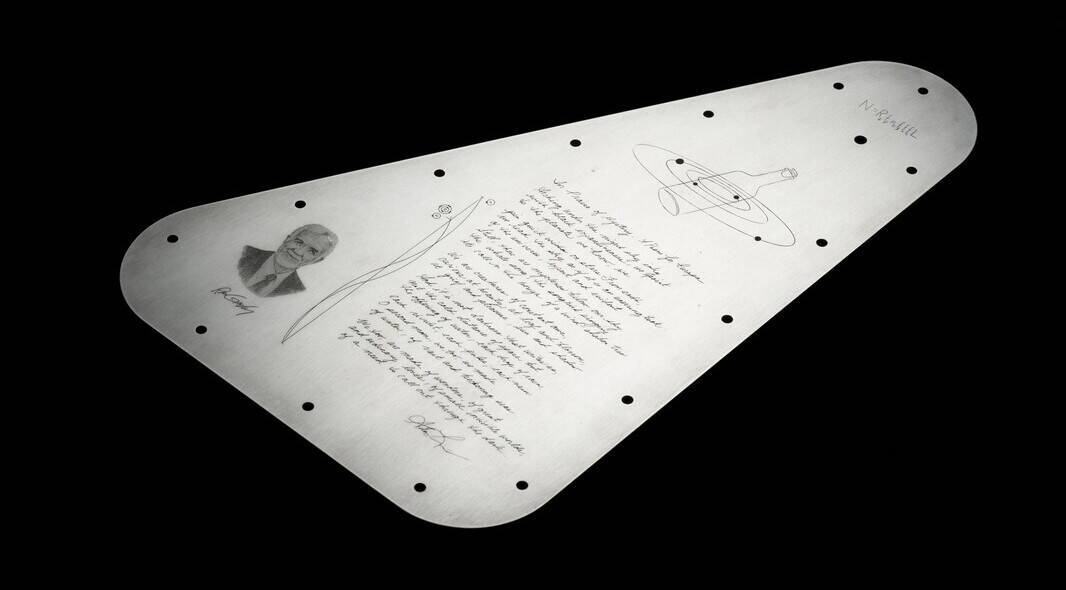
The plate is triangular in shape with rounded corners. On one side, there's an engraving of the poem In Praise of Mystery: A Poem for Europa by U.S. Poet Laureate Ada Limón in his own handwriting. Above that is an image of a bottle suspended in what could be water or space, in the center of which is a silicone microchip with over 2.6 million names submitted by the public stenciled on it.
Above that image is an illustration of the Drake Equation, created by astronomer Frank Drake in 1961, which estimates the possibility of finding advanced civilizations outside of Earth.
Important Resources
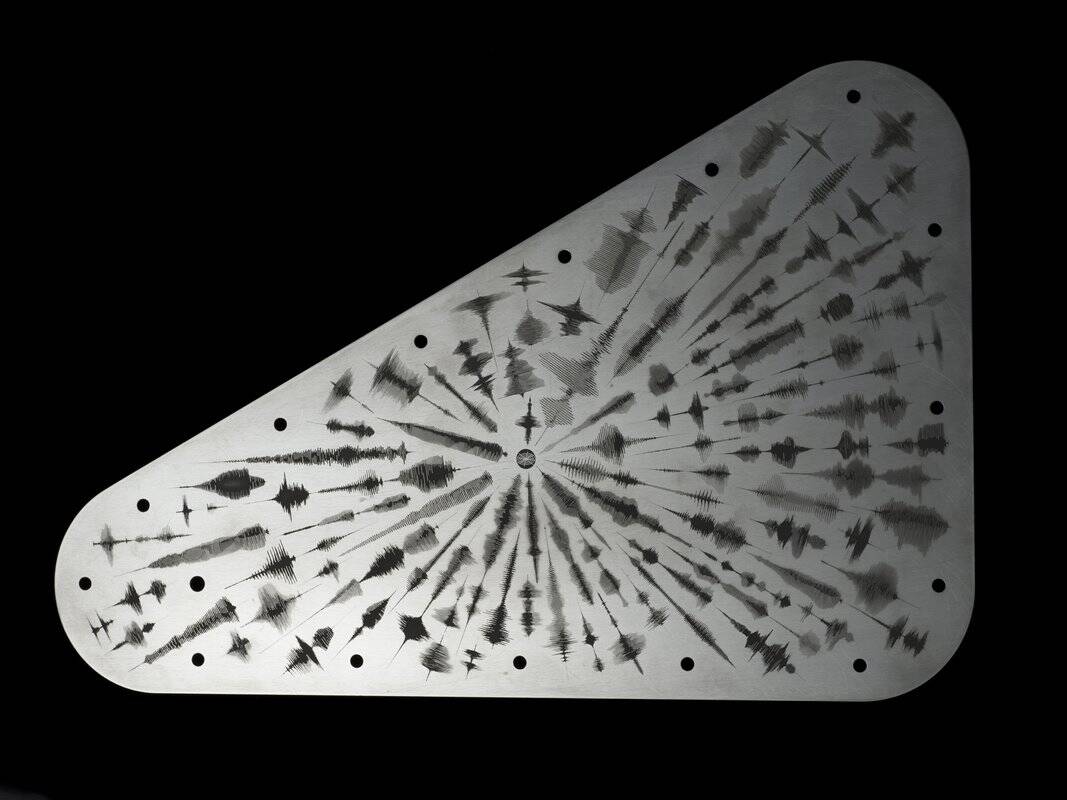
To the left of the poem is a portrait of Ron Freely, one of the founders of planetary science and early proponent of a mission to Europa, work that paved the path toward the Europa Clipper's own journey today. Beside this portrait is a visualization of the radio frequencies that are considered plausible for interstellar communication.
On the other side of the plate is a collection of audio waves fanning outward from the center. Each wave is the word 'water' spoken in a different languages, 103 in total, recorded and etched onto the surface.
Trying It Again
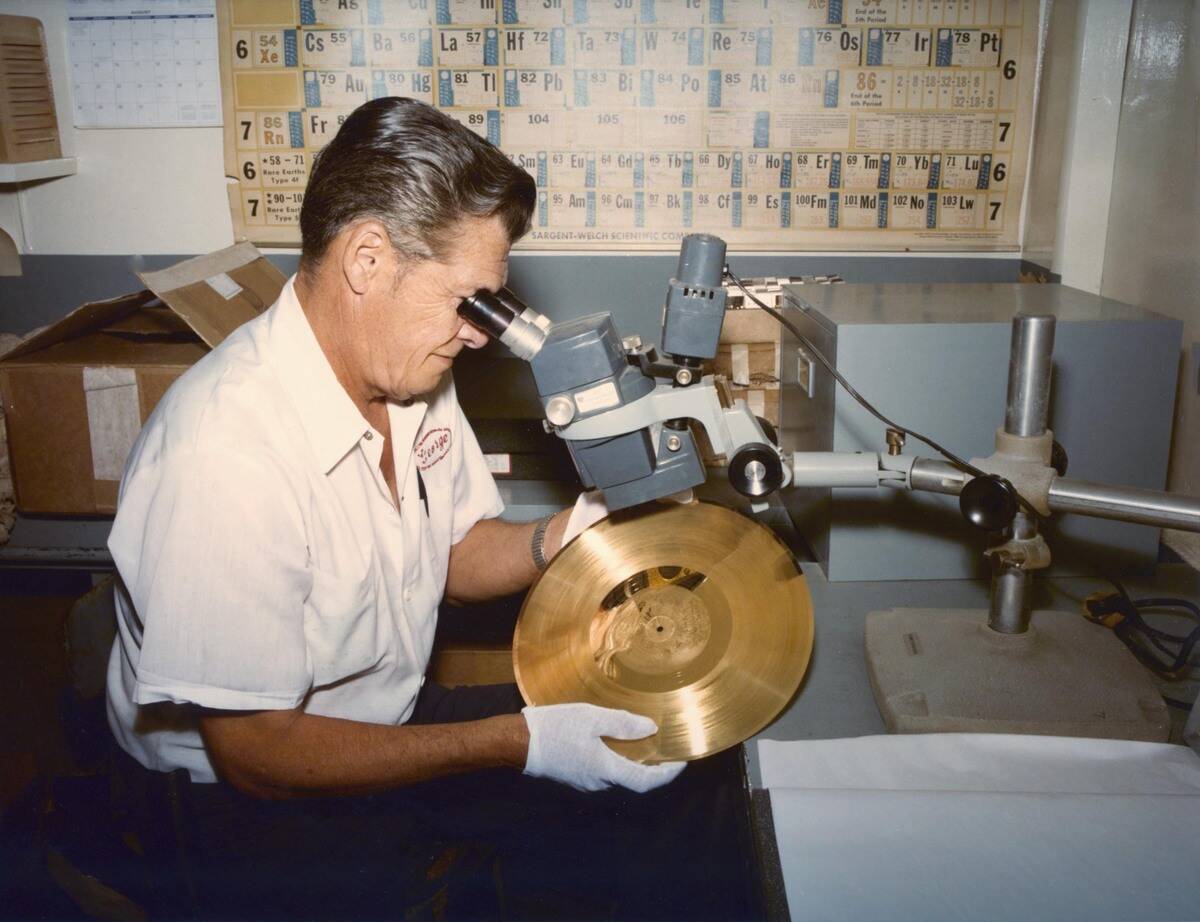
The plate is made of a metal called tantalum and is only roughly 7 by 11 inches.
This isn't the first time that NASA has tried to send a message to other civilizations, though. Most famously, there were the Voyager Golden Records from 1977, two phonograph recordings that were brought upon the Voyager for its missions. The records contained audio and visual depictions of life on Earth, showcasing its diversity and variety of lived experiences on our planet.
Beneath The Surface
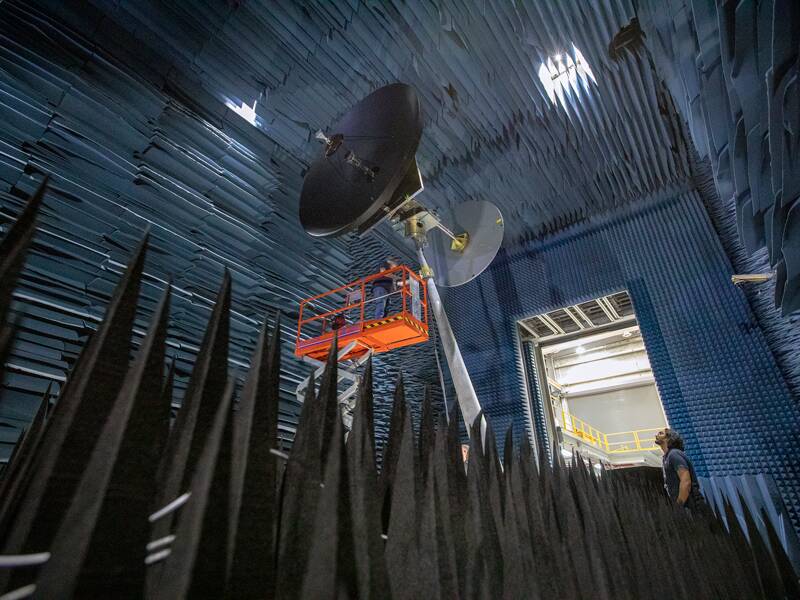
The Europa Clipper, which will be launching from Kennedy Space Center in Florida, will do roughly 50 flybys of the moon Europa before finally landing on its surface in 2030.
There's more to the mission than just delivering their message, though. It's theorized that Europa has an ocean underneath its surface, an ocean with more than twice the amount of water on Earth.
So, the Europa Clipper's larger mission is to learn whether or not that ocean exists and if it could sustain life.
Carefully Considered
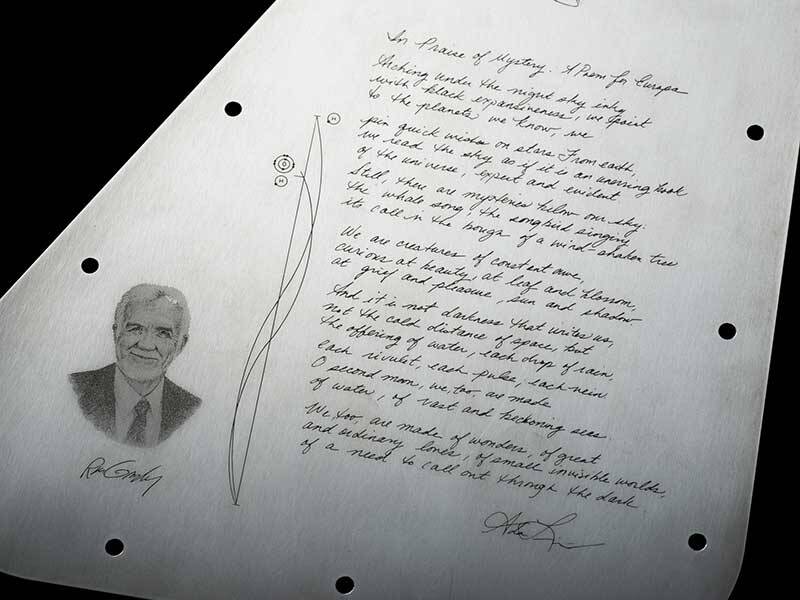
More specifically, the Clipper is designed to determine the thickness of Europa's crust and the surface interactions with the ocean beneath it, to study the composition of the natural materials, and to characterize its geology.
"The content and design of Europa Clipper's vault plate are swimming with meaning. The plate combines the best humanity has to offer across the universe: science, technology, education, art, and math," director of the Planetary Science Division, Lori Glaze, said at NASA Headquarters in Washington.
An Important Message
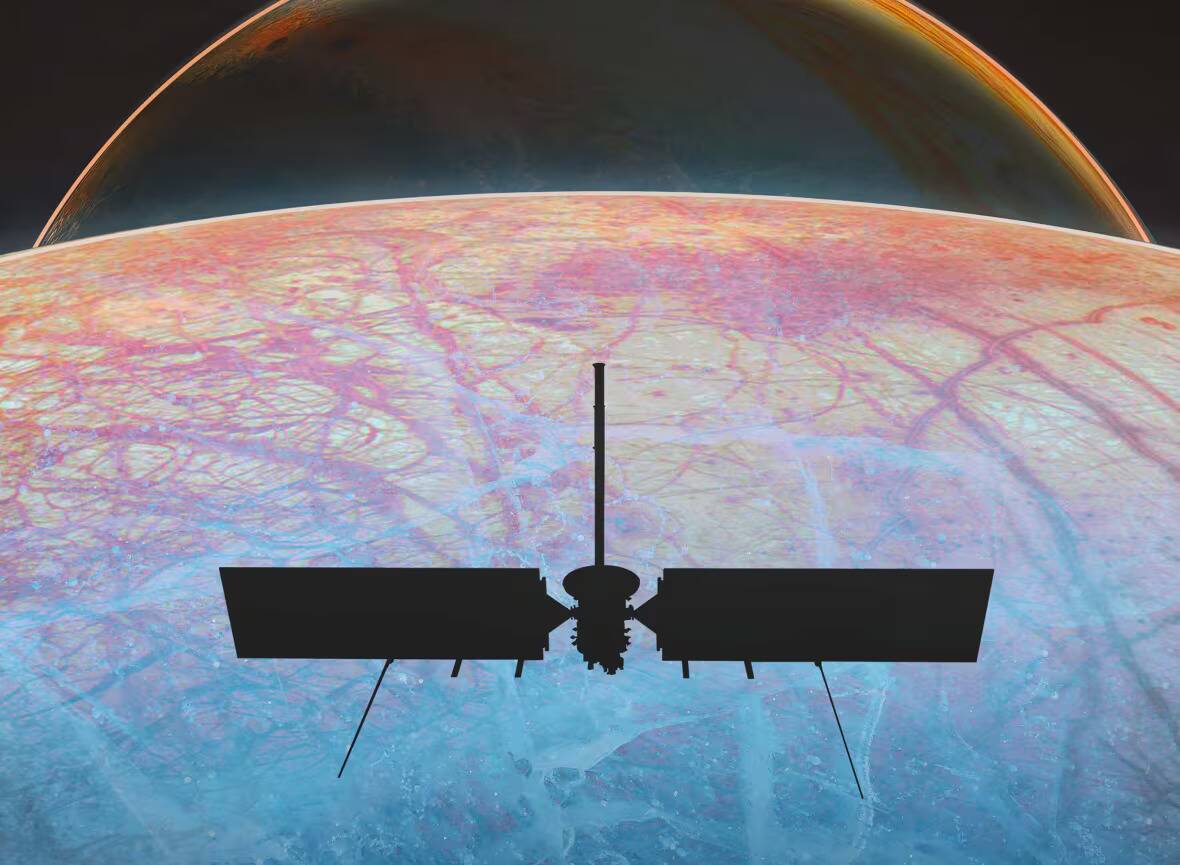
"We’ve packed a lot of thought and inspiration into this plate design, as we have into this mission itself," said Project Scientist Robert Pappalardo of NASA's Jet Propulsion Laboratory. "It’s been a decades-long journey, and we can’t wait to see what Europa Clipper shows us at this water world."
The importance of water in both our lives and this mission was reiterated by Glaze, who said, "The message of connection through water, essential for all forms of life as we know it, perfectly illustrates Earth's tie to this mysterious ocean world we are setting out to explore."





